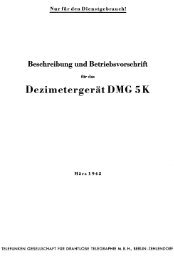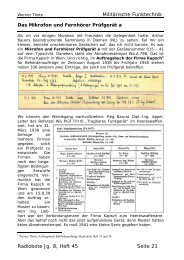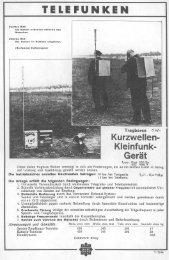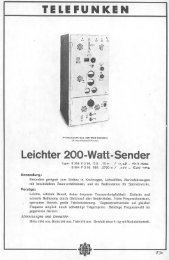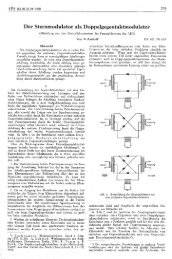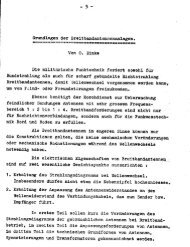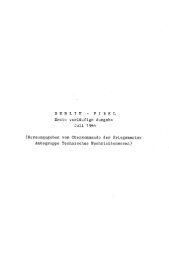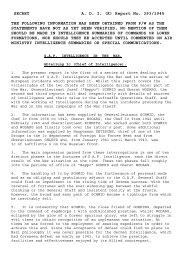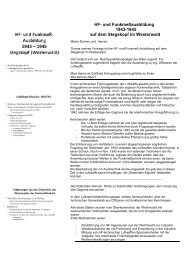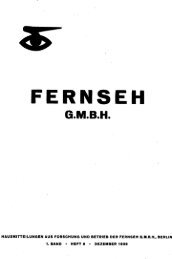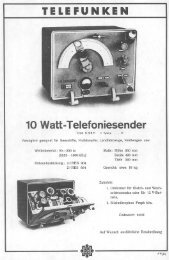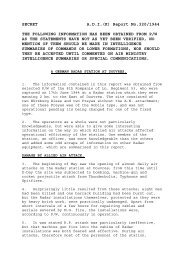SECRET A. D. I. (K) Report No. 357/1945. THE ... - Cdvandt.org
SECRET A. D. I. (K) Report No. 357/1945. THE ... - Cdvandt.org
SECRET A. D. I. (K) Report No. 357/1945. THE ... - Cdvandt.org
Create successful ePaper yourself
Turn your PDF publications into a flip-book with our unique Google optimized e-Paper software.
27. Responder beacons were also being developed for use in the Baldur method of navigation<br />
(see paragraphs 79, 82 of this report).<br />
BEAM SYSTEMS.<br />
Zyklop.<br />
28. This was the latest form of the well-known Knickebein working on 30 - 33,3 mc/s and<br />
received by E.B.L.3 in the aircraft. It was a mobile station which could be fully erected into<br />
operation within a week.<br />
29. A still more mobile unit known as the Bock-Zyklop had been introduced. This could be set<br />
up in three days and could be adapted for use on the FuGe 16 frequency although as yet,<br />
according to documents, no visual indicator for the FuGe 16 had been developed.<br />
30. The 120 W ground transmitter was called the ???? which gave a beam 0.5° wide and a<br />
range of 300 km. at a height of 5,000 meters. The Zyklop systems had been made use of on the<br />
Russian front up to the end of the hostilities.<br />
Sonne.<br />
31. The Sonne beacon system which worked on a frequency of 270 - 480 kc/s was received in<br />
the aircraft on the FuGe 10. It was considered an extremely effective daylight system but the<br />
range limitation was a disadvantage. Fixes could be obtained from ranges up to 1,000 - 1,200<br />
km. Sonne 6 at Quimper which was the most efficient of the Sonne beacons, had been used on<br />
an occasion at a distance of 1,400 km.<br />
32. The sectors served by Sonne covered, an angle of 120 – 150°. The beacon was very reliable<br />
over the centre sector of 100°, but the error increased progressively towards the edges of the<br />
beam in conformity with the sine law.<br />
33. At night errors up to 4° were liable to occur even in the centre of the sector of the beacon<br />
and no real use could be made of it.<br />
Mond.<br />
34. To improve the Sonne beacons both in range, and accuracy, an experimental system<br />
working on the same principle, but on 3000/6000 kc/s was tried out in 1942. The shorter wave<br />
transmission did not prove very reliable and was given up about the end of 1943.<br />
Stern.<br />
35. Finally a beacon of the Sonne type under the name "Stern" was designed for use on a V.H.<br />
frequency. It, not unnaturally, only gave optical range and was, therefore, of no practical value<br />
and was not developed.<br />
Dora.



